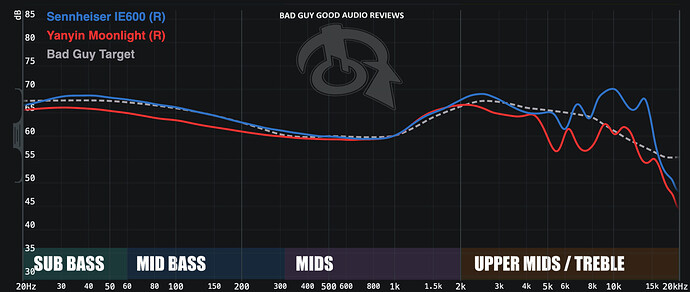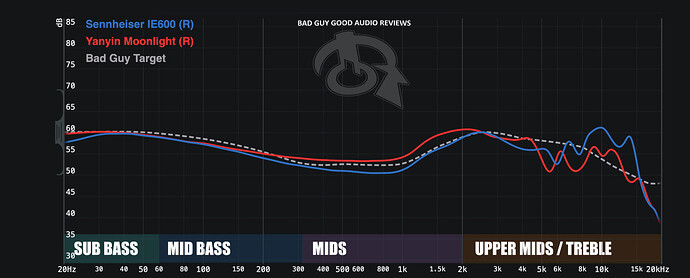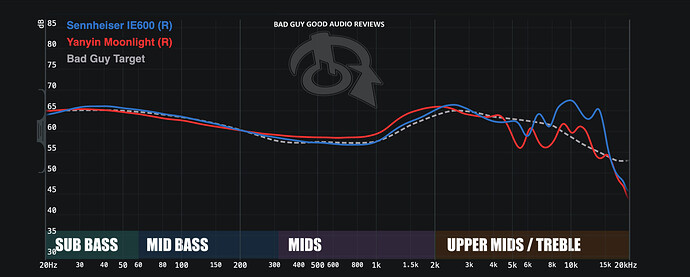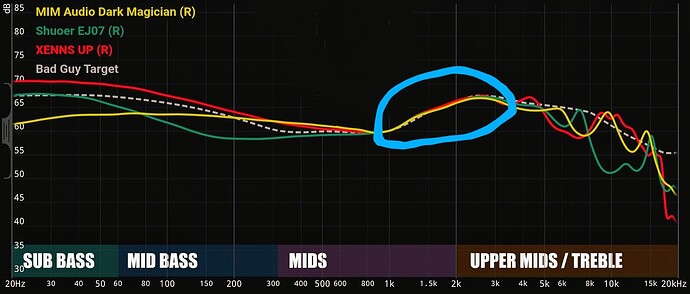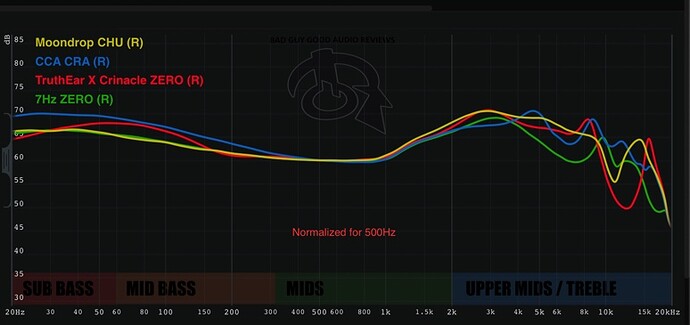Wow! Go Marzi go ![]() its a mind blowing price for such an iem if you accept its elevated lows and highs.
its a mind blowing price for such an iem if you accept its elevated lows and highs.
Oh interesting observation. I don’t understand exactly what normalization is and why it changes the graph. I’ve always seen it at the top and never looked into it. Need to do some research. Might help my future journey with purchases.
It just means you are picking a point on the graph that all the IEMs hit the same point on the x/y axis.
For squigs, normalization at 300hz means every graph will hit 60db at 300hz. If you set it for 1000hz, all the graphs will hit 60db at 1000hz. It just changes the point of interpretation. I personally look at 300/500/700/1000hz to assess graphs
Yep normalizing a graph is valuable imo because not everyone focuses on the same frequency when listening to music. Some people turn up the volume until the bass is a certain lvl, some turn it up until the mids hit a sweet spot and some turn it up until they can’t take the treble any higher. Normalizing at thos e points helps tell you what the rest of the FR is going to look like at your desired bass, mids and teble levels
I’m not grasping this fully. For me treble seems to be the area that is of most concern. It’ll definitely make or break an IEM. Hit the treble right and the bass and mids I can adjust to for the most part. So say I prefer to listen at 70-75 decibels. Would I input that decibal on squigs and then set normalization to 1000Hz to see how everything after 1000 would be perceived at set decibal? Sorry if this is getting of topic can move to another thread or PM.
I guess the first question is when you say you listen at 70-75 dbs are you measuring that at a certain frequency? I usually normalize my listening around vocal clarity since I want to hear those at a certain level so for me I try to volume match on vocals and not a specific frequency. After that you might notice that the bass or mids are lower on one IEM.
For instance the mids are more prominent on the Moonlight vs the IE600 for me. When looking at the graph normalized at 1k it seems like the mids are more prominent on the IE600 than the moonlight.
but if you normalize at 2500k to match vocal harmonics it changes drastically since the moonlight is more neutral so now the lower end of the vocals is wayyyy more forward and the mids are drastically raised up which is closer to how I hear them when listening
Also if we match these two IEMs at some point in the main vocal range, say 210. You can see the Moonlight has again elevated mids and the same forwardness in the pinna gain region, albeit less extreme than at 2500k
Seems to be from around 1k to 3.5k which makes sense to me as when I EQ around that area that’s when you can get the song to sound “wonky”
At the end of the day, kick drums hitting soft or cymbals crashing soft is not so much a deal-breaker as a guitar sounding like a banjo or (fe)male vocals sounding artificial and unrealistic.
Of course, if kick drums hit too hard or cymbals pierce your ears that’s also a huge problem…
@VIVIDICI_111
I’m going to use HBB’s squig because he has all of the sets I referenced before (except Rosefinch):
Big sub-bass with good low-mids: QKZ x HBB
Big mid-bass with good upper-mids: KBear Rosefinch
Balanced warm: CCA CRA
My interpretation of neutral: 7Hz Zero
Neutral-bright: Moondrop Chu
Harman bright: Truthear Zero
We’re going to look specifically at the last four, normalized at 500Hz, which is the point where CRA’s bass boost levels off. Chu and 7Hz are obviously related. The thing that makes Zero more neutral to me is the cut in the upper-mids and treble. The energy that is there from 2-10k in Chu is what makes it a brighter set. Note that Crin’s Zero actually played brighter and thinner than Chu to my ear, even with the sub-bass boost.
I tend to call CRA bass boosted neutral, or balanced warm, because as you can see, once you’re in the mids, CRA follows along with 7Hz Zero, but has a more gradual pinna gain, with a bit more treble energy but not peaking as high as Chu or Crin’s Zero.
CRA is more of a U-shape than a V-shape because of how gradually it rises into the mids and treble.
Now I see what you’re saying - yeah the CRA definitely seems to be a warm neutral considering the FR.
